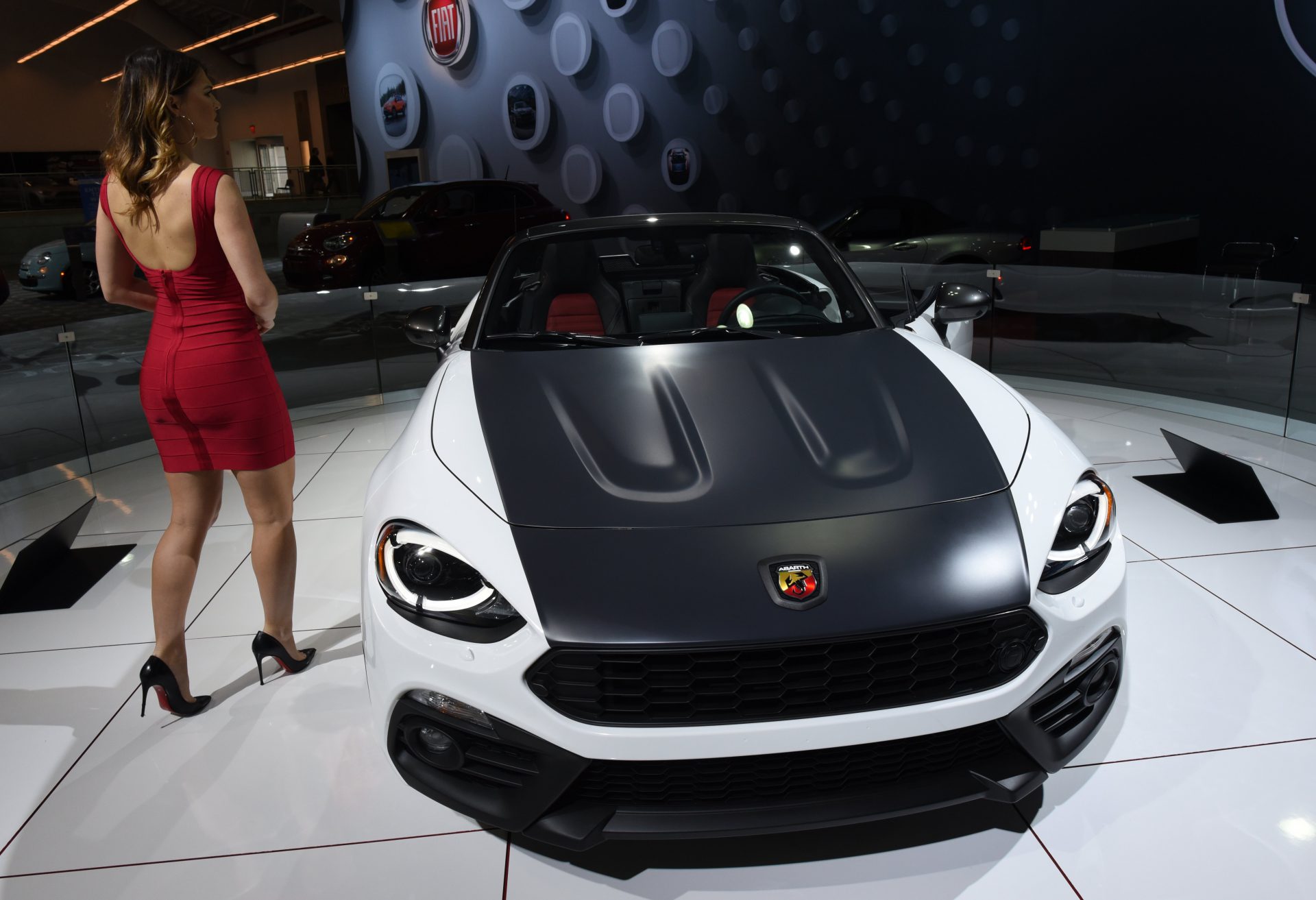

We may earn revenue from the products available on this page and participate in affiliate programs. Learn more ›
Convention centers, like casinos, are designed with a certain amount of pedestrian circulation in mind, so it’s striking just how difficult it is to accidentally wander into the North Hall of the Javits Center, the vast, 1.8-million square-foot convention complex that hosts the annual New York International Auto Show. North Hall is located on Floor 2, a concourse and diffuse fast-food court sandwiched between Floor 3, where during NYIAS most of the high-profile new car reveals take place, and the stable of pickups, off-roaders, and other workhorse vehicles stationed on Floor 1. The main sign for Javits North is nondescript—never a good feature for signage—and leads first to a long, narrow hallway dotted with mall-style kiosks for brands like Formula E and the Venturi land-speed rocket and NASCAR before finally depositing the determined conventioneer at the threshold.
The Hall itself is a cavernous expanse that feels more like a fallback protocol than part of the auto show proper; a sort of Greenbrier hotel where the crucial business of exhibiting cars would continue should the main exhibition floor get nuked. North Hall is where Fiat-Chrysler spent two undeniably lonely media days at this year’s NYIAS, displaying the previously-revealed Chrysler Pacifica minivan and Fiat 124 Spider Abarth to, approximately, no one. (A generous observer would claim North Hall was half full rather than half-empty, with Fiat-Chrysler sharing the ample space with an equally forsaken Mitsubishi, which celebrates a century of carmaking this year; a Tiny Homes exhibit; a local Camaro customizer; and a car-wrapping display.) Recalling the scene several days later while reading FCA boss Sergio Marchionne’s comments about “unrealistic dreams about consolidation”—presumably with Volkswagen AG—raised the question: If a merger is no longer the plan, what is? Because a glance at its New York showing suggests an especially good plan is very necessary for Fiat-Chrysler’s survival.
A Niche Problem to Have
The concern comes not just from Fiat and Chrysler’s sad exile. While the wheelie-popping, 840-hp Dodge Challenger Demon was the clear media star of the show—complete with an after-hours debut party with burnouts and fireworks and Fate of the Furious actor Vin Diesel—it’s not a volume product; it’s a wonderfully bonkers marketing offensive meant to bolster Dodge’s image as the last true ally of the drag strip man. Ditto the Jeep Grand Cherokee Trackhawk with its bulging, 707-hp Hellcat engine stuffed down the front. And while Maserati and Alfa Romeo also had exhibits on the main stage, it was mainly to promote known commodities in the form the Maserati Levante and the Alfa Romeo Stelvio—the first-ever SUV for each brand, and each a potentially make-or-break model.
Jeep and Ram Trucks do the heavy lifting for FCA sales, which overall dipped three percent globally in 2016, to 4.7 million vehicles, after a scorching three-year run for the entire industry. That’s less than half GM’s record 2016 figure of 10 million units sold. And, similar to how Chrysler had positioned itself before the great automotive ruin of 2008, FCA will now sustain itself—as a matter of stated strategy—mainly on trucks and crossovers.
That’s less of a death wish than it used to be, given impressive modern fuel economies across brands and categories, because sales even for bigger vehicles could potentially survive a shock jump in gas prices. Except FCA doesn’t seem to have any properly new or noteworthy vehicles queued up in any part of their stable. Ferrari is no longer under FCA’s roof. Alfa Romeo and Maserati are tapped out for the foreseeable future. Dodge is rapidly narrowing into a niche, muscle-car lifestyle company. The new Jeep Wrangler is months away from a reveal, let alone dealer lots, and despite robust sales Ram Trucks have been trading on nothing but special editions and a purported Ford Raptor-killer concept. Even in the high-margin small- and midsize crossover categories that should be its motherlode, FCA finds itself ill-equipped to mine for volume: there’s the Jeep cohort (Compass, Cherokee, Patriot, Renegade), the Dodge Journey, the deeply unloved Fiat 500X and 500L, and nothing else.
Two Is the Loneliest Number
Which brings us back to the Chrysler exhibit in North Hall. Next to the fleet of Pacifica minivans sat three trim level examples of the second-generation Chrysler 300, now six years old, and a solitary Chrysler 200 sedan, now discontinued. It’s disconcerting to realize that since axing the Dart in September of 2016, Chrysler—which until recently stood as its own pillar among Detroit’s Big Three—now makes only two vehicles: the new Pacifica and the aging 300. Alfa Romeo, barely considered to have a foothold in the states, produces more models for the US market.
Marchionne’s statements concerning potential mergers weren’t meant to quash the idea of consolidation, simply to state the reality that the interest isn’t there. That indifference was palpable in desolate North Hall, where Fiat and Chrysler each had a single stand 30 feet apart from the other, each with a lone spokesmodel idly rotating alongside her respective vehicle. There was no crowd to model for, but every few orbits the pair would properly align and hash out a quick conversation in pantomime. Towards the end of the second media day, one attendee observed such an exchange: a woman in white next to a minivan tapping her watch and twirling a finger in the air—”How much longer are we going to be here?”—and a woman in a tight red cocktail dress shrugging in response—”Who knows?”—across an empty field of carpet.
Josh Condon is The Drive‘s Deputy Editor. Contact him at josh@thedrive.com
